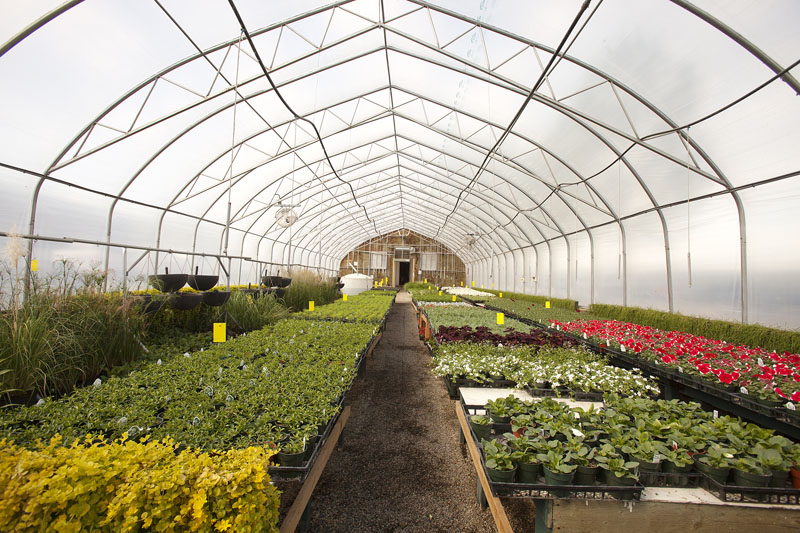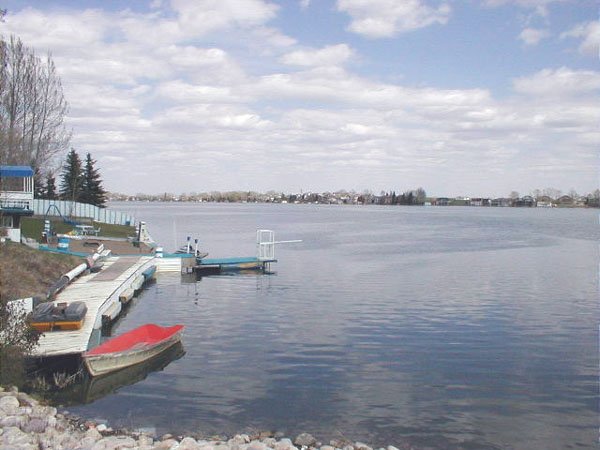
City Parks staff are hard at working preparing the final stages of the city’s metamorphosis like change from winter snow to summer blooms.
“It makes it a more inviting place to live, it attracts people to the parks, it shows pride in the city,” said City of Chestermere Parks Lead Hand Alison Ciupa.
Nearly 8000 plants ranging from flowering annuals, to grasses, to replacement perennials have been grown over the past several months in the city’s 30 foot by 90 foot greenhouse.
“Because it’s Canada’s 150th Birthday this year, the majority of plants that we’re planting are red and white,” said Ciupa.
Once the weather is consistently warm enough for the plants to thrive out of the greenhouse, the end of May or beginning of June, parks staff will start to plant the 75 hanging baskets along with planters and over 15 annual flower beds.
Most of the displays are in the parks and other public areas of Chestermere.
“We keep them in the main areas of town,” she said.
“We have them in John Peake Park, in Anniversary Park and in Millennium Park,” said Ciupa.
The planters are throughout the city on main road medians, entrances to communities and at city hall.
Chestermere has been planting home grown plants since 2010, with the program growing every year.
“It’s grown quite substantially over the last seven years,” she said.
“Now we’re kind of reaching a maximum as far as space goes,” said Ciupa.
The biggest driver of the city’s greenhouse and growing operation is the economic and flexibility advantages it gives parks staff when planning for the spring.
“It’s an economic advantage for sure to be able to grow them ourselves,” said Ciupa.
“We wouldn’t be able to afford to purchase that number of plants,” she said, “so we wouldn’t have as many displays.”
Planning for each spring’s planter and hanging baskets designs begins in the fall.
“I just start looking through greenhouse catalogues,” said Ciupa, “I put together plans on paper of what I’d like to see for the following season.”
Once the plans are completed, Ciupa places orders with commercial greenhouses for plugs of the plants she needs by the end of November.
Plugs are the industry term for the first stage of growth after a seed has germinated and is the stage that most of the plants grown by the city greenhouse start at.
By ordering the plants as plugs, Ciupa is able to bring in a greater variety of plants than if she were to order mature ones when it is time to plant.
The plugs begin to arrive at the end of February with plants continuing to be delivered until April.
“During that period of time we pot them up into larger pots and once they’ve established we start fertilizing on a regular basis,” she said.
In June, once everything has been planted, parks staff switch from planting to caring for everything.
“I have two water truck drivers that basically spend all summer watering planters, hanging baskets, the beds, trees, shrubs basically everything out there that needs to be watered,” said Ciupa.
To keep everything verdant and blooming, the hanging baskets are fertilized weekly while the planters are fertilized every second week.
After the first frost in the fall, parks staff dig up some of the perennial plants to bring into the greenhouse for the winter and clean out the planters of the dead annuals.
“A lot of the nice centre pieces in the planters just happen to be perennial and so if we left them in the planters over the winter they would not survive,” she said.
Despite being perennial, plants are unable to overwinter in the planters because not enough heat is maintained in the soil of the planter compared with flower beds in the ground.
“So we bring them in and they sit dormant over the winter,” said Ciupa.
By doing this, nearly all of the perennials survive year-to-year.







